Stuart Palley is a freelance photographer who specializes in covering wildfires in his home state of California. His six-year ‘Terra Flamma’ project includes images drawn from Stuart’s experience at 45 major fires, including some of the most devastating in California state history. When I spoke to Stuart he had just returned from the scene of the Woolsey fire.
Stuart spoke to me on the phone from his truck, on his way back from getting one of his rear doors fixed. The door was bent on its hinges after being caught by the 60mph winds that fed the Woolsey fire as it devastated Malibu and neighboring communities.
Despite spending much of his career in one of the most hazardous environments imaginable, the repair bill for the truck door is the first major misfortune to befall Stuart in his wildfire work. That and a broken pair of reading glasses. But it’s not just luck that’s kept him safe, as he explained.
The following interview has been edited for clarity and flow. Find more of Stuart’s work at his Instagram.
You’ve just come back from a fire, right?
Yes, I’ve just returned from an assignment to the Woolsey Fire, in Ventura and Los Angeles counties. I’ve been on assignment for a bunch of places but primarily I was there for the LA Times. I was shooting as a photojournalist but I was also adding work for my Terra Flamma project. So as well as the more reportage-style images I was also shooting long exposures at night.
Let’s talk about your ‘Terra Flamma’ project.
Terra Flamma is a project where I’ve been documenting wildfires in California, using long exposure tripod-mounted images. The goal of the project is to put the fires in the geographic context where they occur, which can be everywhere from the forests of the Sierra Nevada mountains to people’s backyards in Malibu, as we saw recently. So anywhere and everywhere that wildfires occur in California.
I want people to see the images and learn a little bit and educate themselves about the fires, and if they’re a homeowner maybe they’ll make themselves a bit more prepared. The other goal is to share the work that the firefighters do out on the fire line, so there’s an educational component there too.
Images from ‘Terra Flamma – Wildfires at Night’
$ (document).ready(function() { SampleGalleryV2({“containerId”:”embeddedSampleGallery_6615601555″,”galleryId”:”6615601555″,”isEmbeddedWidget”:true,”selectedImageIndex”:0,”isMobile”:false}) });
What’s your main camera gear right now for fire photography?
The Nikon D850 with the latest version of the 24-70mm F2.8 VR, and I use the D850 with the grip for better battery life. That’s what I’ll use for 90% of my fire work. Sometimes I’ll use the Sigma 14mm F1.8 Art, just because it’s so great for wide-angle low-light work. Also I’ve never been a fan of the 70-200mm F2.8 class of lenses, they’re so big and heavy and complex, so I recently replaced my F2.8 with Nikon’s 70-200mm F4. It’s almost half the weight and I’ve loved using it. This is the first fire I’ve used it on, and I haven’t missed having the extra stop of light at all. Even on the Z7 it’s very well-balanced.
You were shooting with the Nikon Z7 for the first time this season – how was it?
It was very easy for me to start using the Z7 initially because the control layout and the design is so similar to the D850 but when push came to shove, the autofocus just couldn’t hack it. I tried using it for the first few hours, but after about an hour and a half I had to ditch it for my D850. I was walking around at night with the 24-70mm F4 and the 35mm F1.8 and trying to shoot, and it was just not co-operating when it came to focus. I was just using regular center point, AF-S and it keep losing focus, missing focus and hunting.
Going back to the D850’s viewfinder after the Z7’s EVF, it felt like I was using a much more antiquated camera
I will say that it was really nice to have a lighter camera for that first couple of hours though. I may use it for my next daytime assignment just to check it out more. The Z7 for daytime use, for general reportage, it’s a totally fine substitute for the D850. And also, shooting with that 35mm F1.8, I got the speed of the F1.8 plus of course stabilization, so I was able to push that lens more than I could have if it was on a D850 because none of Nikon’s fast F-mount primes have stabilization. Also, going back to the D850’s viewfinder after the Z7’s EVF, it felt like I was using a much more antiquated camera.
 |
Stuart has recently incorporated the new Nikon Z7 into his wildfire photography kit, alongside a D850 and brace of F-mount lenses.
Read more about Stuart’s experiences with the Nikon Z7
|
What’s the most important criteria for your gear?
The most important thing is that I need to change the main functions of the camera quickly and easily, and they’re all physically accessible so I don’t have to go through the menu. I went on a little road trip, camping with the Z7 and I kept it in Auto ISO and it was great. But I had frustrations with it at night. For me, having full manual control and reliable nighttime autofocus, those are the most important things. The Z7’s autofocus at night was just inferior to the D850’s when I was really pushing it. I’m usually shooting in pretty low light in the fires, and even with the 35mm F1.8, the Z7 would just be hunting, where the D850 was locking straight on. At night, in an action-filled, more photojournalism situation versus landscape or more everyday photography, I just couldn’t rely on the autofocus.
The D850 and 24-70mm were doing great, but the Z7 was just hunting for focus
When I say photojournalism kind of work I mean working in a face-paced environment where things are moving really quickly and I’m having to change settings constantly. Maybe I’m shooting people evacuating, or firefighters working, and then a few minutes later the camera is on a tripod to shoot some of the long exposure more fine art-type images. I found the Z7 harder to switch around between those shooting situations, but partly that might be on me – maybe I need to spend more time setting up the custom functions and modes.
Autofocus was the real kicker though. I walked into some situations where I was photographing some property that was burned, to send in – I was on assignment at that time – and the D850 and 24-70mm were doing great, but the Z7 was just hunting for focus.
How did you get started in fire photography?
Well, the first wildfire I ever photographed was when I was interning for the Orange County register. They have fire gear so I was able to borrow the proper safety gear right off the bat. But looking back, I didn’t know enough then about fire behavior to properly, safely cover it. If I were to do it all over again I would have gone with another photographer or reporter with more experience.
The second fire I went to, I made a couple of mistakes that I was lucky not to get hurt from
The second fire I ever went to, I made a couple of mistakes that I was very lucky not to get hurt from. At that time I had the safety gear, but I didn’t have the experience. And that’s the biggest thing – understanding the weather, and understanding how fire behaves. And if you’re not paying attention to that you can very easily get hurt.
Images from the Woolsey fire, 11/09/18
$ (document).ready(function() { SampleGalleryV2({“containerId”:”embeddedSampleGallery_8553960379″,”galleryId”:”8553960379″,”isEmbeddedWidget”:true,”selectedImageIndex”:0,”isMobile”:false}) });
You’re working in very hazardous environments, which I assume you wouldn’t recommend just anyone should show up and try to photograph…
My recommendation is that you shouldn’t just go out on a whim and photograph wildfires. It’s dangerous. You need to be doing it for a legitimate publication, something in the public interest. Any time I’m in a fire, I’m always sending images back. It’s important to me to do that. The reason we have media access to the fires in California is that the media serves a purpose, to inform the public.
Even if you have accreditation you have an obligation to be safe, you have an obligation to wear the safety gear and have training and knowledge about wildfires because if you don’t, you could end up becoming the story. And at the end of the day I don’t think that’s a responsible thing to do.
People don’t realize that the margins for error in fires that are driven by strong offshore winds are very low
At this most recent fire, because it was in Los Angeles, there were a lot of people there. And especially on the first two nights when things were going really crazy, they had no protective equipment, they were parking in the road… and in my professional opinion they were safety hazards to themselves and the people around them. And for me, that’s frustrating.
I see people that are really just kids, out there in shorts and T-shirts, and it’s incredibly dangerous. People don’t realize that the margins for error in fires that are driven by strong offshore winds are very low. If you’re in the wrong place at the wrong time, even if it’s just by a factor of a couple of seconds, that can be the difference between you going home safely or ending up in the burn unit.
 |
| Some of the thousands of dollars of equipment that Stuart has bought in order to operate around wildfires safely. |
At the height of the Woolsey fire I was there being showered by embers, but I was wearing fire boots, a brush shirt, a brush jacket, then a helmet with a shroud that covered my face and neck, plus goggles and a passive respirator. I had to invest thousands of dollars in all of that safety equipment, and also invest a lot of time to understand fire behavior.
My recommendation, if you’re a photographer interested in taking pictures at wildfires is firstly, shoot for an organization, so there’s a reason and a purpose for you being there. Secondly, you might need to do a ride along with someone more experienced before you start doing it for yourself. With fires getting worse on the west coast, I’m all for there being more people out there telling this story. It’s important that we have a diversity of voices, but there’s a proper way of doing it.
Along with the reportage work, I’m also shooting images for my project. And that’s what I mean when I say that Terra Flamma combines the art with the documentary work.
These days, you must have developed relationships of trust with the firefighters – how does that affect what you’re able to do?
The fire world is very small, although actually at this most recent fire I only saw one firefighter I knew. But when I’m photographing in the forest, with the Forest Service, there are people who are familiar with my work and know who I am, and they’re able to relax a little bit because they know I know what I’m doing. They don’t need to keep an eye on me, so they can focus on their work, which allows me to get closer and focus on the moments a little more.
My first rule is be safe, don’t compromise the safety of first responders, and stay out of their way
Part of the professional responsibility of covering these fires is investing in your own equipment and safety training. You can’t just go in like John Wayne and just start shooting. My first rule is be safe, don’t compromise the safety of first responders, and stay out of their way. Once I feel like I’m covered there, it’s OK to start taking pictures.
How do you gauge that line, from safe to unsafe?
Well, there’s usually never a clear line. But for example if there’s a very narrow road in a fire zone with one way up and one way out, I won’t drive my truck up there. I’ll park and go on foot, or go to a different place. Because if I’m blocking an escape route for a fire engine, or compromising access for a fire crew, I don’t want to get in their way. The couple of seconds it would take for me to back up or do a u-turn, that could make the difference between getting out of the fire, and not.
This most recent fire was moving so quickly that in a lot of places they barely had time to evacuate people. There were a lot of civilians just staying and not evacuating their houses, and I was saying ‘Look, guys, you seriously have a chance of getting killed if you stay here’. Some of them left, and for me that was the line – as soon as the firefighters left, so did I. There were some incredible pictures to be made, but the situation wasn’t safe. About five minutes later that whole area literally exploded into flames.
This past week, and the last year have been incredibly dangerous for numerous reasons
Every situation, every fire, every day is different. You make a judgement call. There’s a fundamental way of being safe. I make sure I know what the weather is doing, I have escape routes worked out where I can go if things go bad. I’m taking pictures but I’m also keeping an eye out and looking around, and making sure a power line isn’t going to fall on me or something like that. That’s the base level of safety, and in each situation I assess it, and see where I can go and what I can do that will be safe, and won’t create a hazard for other people. It’s a lot of little learning experiences like that, which add up.
One of the reasons I didn’t cover the Camp Fire is there were so many downed power lines and trees falling that I personally didn’t feel it was safe to go up there and drive around in certain areas. It’s a very hazardous situation up there. This past week, and the last year have been incredibly dangerous for numerous reasons. I also wanted to focus on the Woolsey Fire in Los Angeles, since it’s my home area, and report on the story happening locally. There are photographers doing important and powerful work at the Camp Fire in their own backyard.
GoPro footage from the Woolsey fire
Have there been any occasions where looking back you felt like you pushed the line too far in terms of your own safety?
I think that in the beginning, especially the second fire I went to in 2013, the Powerhouse fire, I definitely did that. I got too far away from my car, I was about 1/4 mile away and the fire jumped the road between me and the car. I had to run down the road through the smoke, very close to the fire to get back to my car, hoping it hadn’t been burned up. I was wearing boots that didn’t fit me, so I tripped and twisted my ankle, then almost got run over by a fire truck. It was at that point that I thought ‘Alright, I need to get the training to learn how to not be a safety hazard’.
Friday morning [November 9th] I drove in at about 8 or 9am when the Woolsey fire started running into Malibu. I was up on a hill, very close to Broad Beach, which is ’billionaire’s beach’ in Malibu where all the wealthy and famous live. The fire was coming up the canyon very rapidly, and I assessed that I maybe had five minutes to photograph there.
Probably the closest calls I’ve had have actually been driving back after fires, when I’m really tired
One of the things I did on my way up was to look out for an escape route. I decided that the beach would be my escape route, and eventually the wind was pushing the fire all the way down the canyon, and in fact I did end up on the beach. The fire destroyed the neighborhood I’d been in five minutes previously. That was a situation where I knew this was a historic event, and I knew that I’d need to push to the limits of what was safe in order to tell the story. I stayed as long as the firefighters did, and when they left, I left.
Probably the closest calls I’ve had have actually been driving back after fires, when I’m really tired and almost falling asleep at the wheel and driving off the freeway. And driving in the smoky woods, late at night, if something happens nobody will find you until the next day. These days I stop and take naps at off-ramps if I feel the fatigue coming on.
How can you see beauty in something so destructive?
Fire is a powerful force, and I feel that fundamental irony every time I’m in the field at a fire making pictures. On one hand, you have this incredible force of nature, which is exacerbated by humans, which can be both beautiful, terrifying, and awe-inspiring all at once. But it can also devastate, destroy neighborhoods, take dozens of lives, cut down hopes, dreams, and memories of families in houses and wilderness areas. The dichotomy there isn’t lost on me and it weighs on my mind. Especially in California where the cost of owning a home is so high, losing your house can often mean financial ruin. It’s absolute tragedy and loss.
If the pictures engage people to educate themselves about wildfire […] then the project is attaining its goal.
But just because an image has tension in it, or there are extremely heavy subjects in an image or project, doesn’t mean we should run away from facing difficult and inconvenient truths. I’d rather face the subject of wildfires, climate change, and the ensuing fallout head on, and if there are some pictures as the result of it that engage people to educate themselves about wildfire and make their own decisions on a changing climate, then the project is attaining its goal.
Additionally, I am involved with a fire foundation [The Eric Marsh Foundation] that raises money for injured wild land firefighters and families of the fallen, and the wildfire community has become very close to my heart.
 |
| Stuart’s protective gear includes a helmet, goggles and face shroud. |
What do you want people to take away from the Terra Flamma project? These aren’t just meant to be pretty pictures, right?
Right. I’m doing this because wildfires are a function of climate change, and right now California and the western United States are taking the brunt of it. It’s important to me to document that and tell that story.
The wildfires are getting larger, more destructive and killing more people in California. In 2017 we had the largest, most destructive and most deadly wildfires in California, and already in 2018, those fires have been eclipsed. The Camp fire is now the most deadly and destructive wildfire in California history, eclipsing the Thomas fire, which only happened a year ago, which was the largest wildfire in California history until the Ranch fire in 2018. So already 5 out of the 10 most serious wildfires in California history have been in the last four years, and we’ve been keeping record since the 1890s. There is a direct correlation between that, and manmade carbon dioxide emissions in the atmosphere.
Our weather patterns are changing. So normally at this time of year we get rain in California. But as the rainy season gets condensed, we get more extreme rain events. Instead of it raining in a 3-week period we might get all of our rain in 10 days, which causes flooding and allows the stored fuel to dry out more, which drives more aggressive fire behavior.
Additionally, in a warming climate we have more days per year that support large fire growth. We have hotter days in the summer that are drying up the vegetation more quickly, which makes them more susceptible to burning. That’s measured using something called the Burn Index. They measured the area around the Camp Fire in Northern California and the Burn Index was 241. It was one of the highest burn indexes ever recorded.
This isn’t just about poor forest management then?
Well, if we’re going to talk about our President – and I think it’s generous calling him that – he has no idea what he’s talking about. Most of the forests in California are managed by the federal government. So when he’s talking about cutting off money to the state of California, it doesn’t even make sense, fundamentally.
Forest management is only part of the issue. Like most things, the answer is actually very complex. California includes a lot of very different climates, and every one needs to be managed differently. The way we manage forests by suppressing fires has in many cases increased the fuel load in forests. But the other thing is that we’re building houses on the Wildland Urban Interface, where the forest and scrub meets civilization. Malibu is a prime example of homes that are built on hillsides, and in areas that are covered in brush.
We’ve built millions of areas in these interfaces and in transition zones. What that means is that the statistical likelihood of people’s houses being affected and of people being hurt in fires goes up. The fire triangle is heat, oxygen and fuel. So with climate change, you get drier fuels, less rain and hotter days, which are all the conditions needed to create fire growth.
Climate change has become very politicized in the US, and I wish it weren’t a Republican versus Democrat thing
We need to have a conversation about where and how be build. Some areas are prone to regular intervals of wildfire, and we are not invincible against nature. The same fires happen in the same places, and as long as homes are rebuilt in certain areas, there will be a risk of destruction down the line. History repeats itself.
Generally speaking, what we’re seeing is an acute effect of climate change. Some of the firefighters I speak to who have been climate change skeptics, and really quite conservative have said to me, ‘Stuart, I don’t know what’s going on, but things are different. I haven’t seen fires like this.’ They’ve said ‘For the longest time I thought climate change was B.S. but I can’t deny what I’m seeing in front of my eyes’. Climate change has become very politicized in the US, and I wish it weren’t a Republican versus Democrat thing. I view it as a fundamental issue about the survival of people on this planet.
The data is there. We see it happening, but unfortunately the political leadership, even when they acknowledge it, aren’t acknowledging the reasons why it’s happening. And it’s getting to the point where I’ve gone from thinking that I want to document what’s going on to being frankly terrified that after only six years working on this project I’ve seen the changes starting to accelerate.
2018 has been a record-breaking year for wildfires in the western United States. At the time of writing, the Woolsey Fire has burned almost 100,000 acres with the confirmed loss of 3 lives. The Camp Fire has burned 138,000 acres and claimed more than 70 lives, with hundreds more people unaccounted for. To help the victims of this months’ California wildfires, click here. If you’re interested in fire safety training or protecting your home, the NFPA is a good resource.
If you want to donate to the Eric Marsh Foundation you can do so here. If you’d like to support Stuart’s Terra Flamma project, click here.
Be safe, and don’t put yourself or others at risk.
Articles: Digital Photography Review (dpreview.com)



















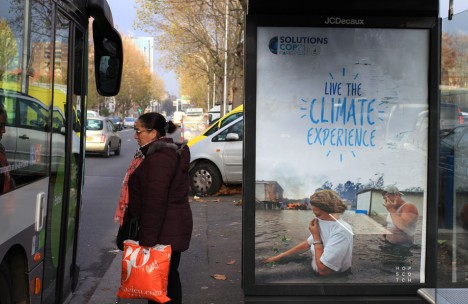

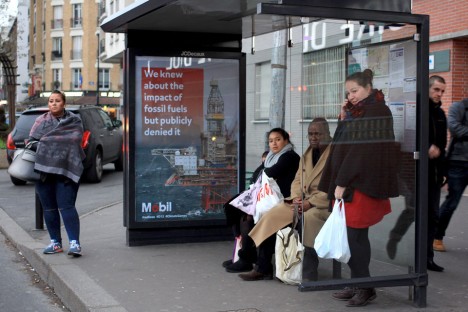
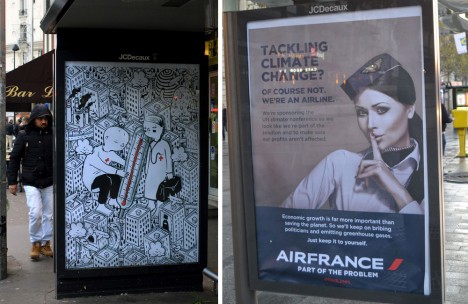
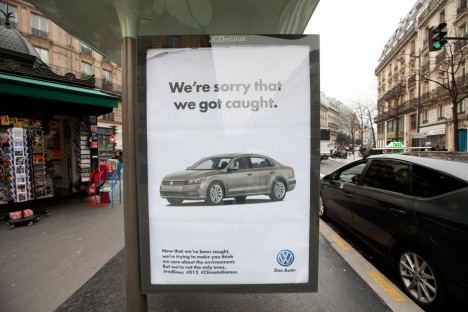

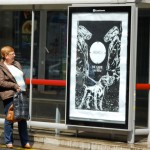
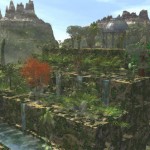
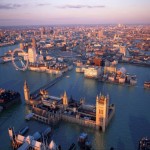




You must be logged in to post a comment.